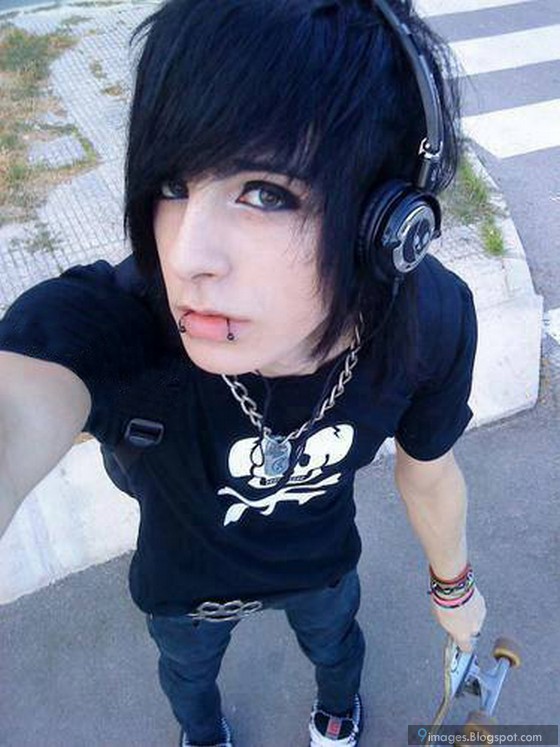The Scene Boy subculture has emerged as a significant aspect of youth culture, particularly in the early 2000s, characterized by its unique fashion, music preferences, and social dynamics. This article delves into the intricacies of the Scene Boy identity, exploring its origins, evolution, and impact on modern culture. Understanding this subculture not only sheds light on the diverse expressions of youth but also highlights the importance of community and self-identity among young individuals.
Throughout this article, we will explore the defining features of Scene Boys, including their fashion choices, music influences, and the community that surrounds them. We will also discuss the historical context of this subculture and its relevance in today's society. By the end, readers will gain a comprehensive understanding of the Scene Boy phenomenon and its significance in the realm of youth culture.
Whether you are a part of this vibrant community or just curious about its dynamics, this article aims to provide valuable insights and foster a deeper appreciation for the Scene Boy lifestyle. Let’s embark on this journey to uncover the layers of this fascinating subculture.
Table of Contents
- What is a Scene Boy?
- Origins of Scene Boys
- Fashion Style of Scene Boys
- Music Influence on Scene Boys
- Social Dynamics within the Scene Boy Community
- Notable Scene Boys in Popular Culture
- Criticism and Misconceptions
- Conclusion
What is a Scene Boy?
Scene Boys are typically characterized by their distinctive fashion sense, love for alternative music, and a strong sense of community. This subculture is often associated with a colorful and expressive style that reflects individuality and rebellion against mainstream norms.
Unlike some other youth subcultures, Scene Boys embrace a wide range of musical genres, including pop-punk, emo, and electronic music. Their identity is often tied to their interests in fashion, music, and social interactions within the community.
Origins of Scene Boys
The Scene Boy subculture has its roots in the early 2000s, evolving from previous movements like emo and punk. As the internet began to play a significant role in shaping youth culture, Scene Boys found a platform to express themselves and connect with like-minded individuals.
Key influences include various music scenes, particularly those surrounding bands like My Chemical Romance and Fall Out Boy, which helped define the aesthetic and emotional depth of the Scene Boy identity. The rise of social media platforms further facilitated the spread of this subculture, allowing Scene Boys to share their fashion choices and music preferences with a global audience.
Fashion Style of Scene Boys
Fashion is one of the most visual aspects of the Scene Boy subculture. Key elements include:
- Brightly colored hair, often styled in dramatic ways
- Graphic t-shirts featuring band logos or provocative statements
- Skinny jeans and colorful sneakers or combat boots
- Accessories such as wristbands, beanies, and large glasses
This fashion style serves as a form of self-expression and often acts as a badge of identity within the Scene community. Many Scene Boys use their appearance to communicate their interests and affiliations.
Music Influence on Scene Boys
Music plays a central role in the Scene Boy lifestyle. The subculture is heavily influenced by genres such as:
- Pop-punk
- Emo
- Post-hardcore
- Electro-pop
Scene Boys often attend concerts and festivals, fostering a sense of community and belonging. This musical influence not only shapes their identity but also drives the fashion trends associated with the subculture.
Social Dynamics within the Scene Boy Community
The Scene Boy community is marked by strong social ties and a sense of belonging. Online forums and social media platforms provide spaces for Scene Boys to connect, share experiences, and support one another.
Friendship and loyalty are highly valued in this community, often leading to the formation of close-knit groups. However, the community also faces challenges, including criticism from outsiders and internal conflicts regarding authenticity and acceptance.
Notable Scene Boys in Popular Culture
Several individuals have become iconic representations of the Scene Boy subculture, influencing fashion and music trends. Some notable figures include:
- Jared Leto - known for his role in Thirty Seconds to Mars
- Brendon Urie - lead singer of Panic! At The Disco
- Gerard Way - frontman of My Chemical Romance
These artists not only embody the Scene aesthetic but also contribute significantly to the music that defines the culture.
Criticism and Misconceptions
Despite its vibrant nature, the Scene Boy subculture often faces criticism and misconceptions. Critics may perceive Scene Boys as superficial or shallow, overlooking the deeper connections and emotional expressions that underpin the community.
Additionally, some may view the subculture as a phase, failing to recognize its lasting impact on identity formation and cultural expression among youth. It’s essential to approach this subculture with an open mind and an understanding of its complexities.
Conclusion
In summary, the Scene Boy subculture is a multifaceted movement that encompasses fashion, music, and social dynamics. This article has explored the origins, defining characteristics, and notable figures associated with this vibrant community. By understanding the Scene Boy identity, we can appreciate the diversity of youth culture and the importance of self-expression.
We invite you to share your thoughts and experiences related to the Scene Boy subculture in the comments below. If you found this article informative, consider sharing it with others who may be interested in learning more about this fascinating topic.
Thank you for taking the time to explore the Scene Boy subculture with us. We hope to see you again soon for more insights into youth culture and identity.
Exploring The Chaplin Legacy: Josephine Chaplin And Her Siblings
Crestview Tornado: A Comprehensive Insight Into Its Impact And Recovery
Exploring The Adventures Of Steven Weber In Tanzania


